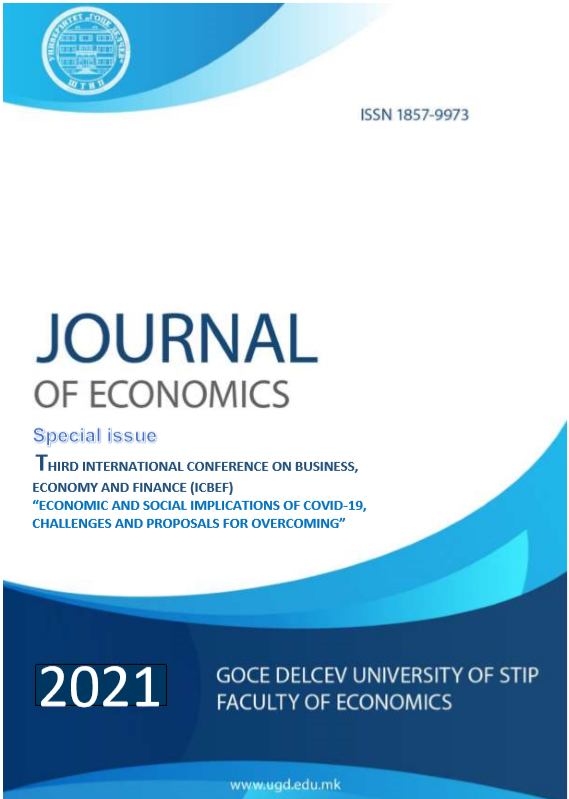The impacts of COVID-19 on the logistic ecosystems and benefit for the circular economy
DOI:
https://doi.org/10.46763/JOE216008tKeywords:
Covid-19 pandemic, circular economy, logistics, supply chain management, resourcesAbstract
The aim of this paper is to identify the specific reviews about many economic uncertainties concerning with Covid 19 pandemic and then how the world economic landscape will evolve. Furthermore, the research is related to the logistic system during the pandemic by means of a circular economy environment. This analysis will show how issues associated with policy-makers grapple with this public health crisis, they also face the need to mobilize recovery efforts to revitalize an economy throughout the circular economy in the logistic ecosystem and hit by the effects of the pandemic. The global pandemic of COVID-19 caused catastrophic consequences for the world economy. Judging by the trend of this global pandemic, the expectations are not at all optimistic that this problem will be completed in a short time. All companies involved in the movement, storage and flow of goods are directly affected by the COVID-19 pandemic. In order to easily cope with the problems and difficulties with the Corona virus pandemic, the need for optimization of the supply chain and complete digitalization of the logistics sector in all spheres of our society is imposed as an essential need. Or the time has come for a different economic model that will more effectively address the growing problems in the distribution sector of industries or national economies. The important role of supply chain, which includes logistics, is an inevitable choice while attempting to make a business sustainable, the often ask question in the science and industry practice. Logistics play a vital role in the integration of circular economy principles in the capital-intensive industry as they facilitate the flow of materials between all actors in the value chain. Circular economics is the much-anticipated "desired" concept of creating values through the rational use of resources and the minimization of the adverse environmental impact of manufactured products at all stages of the product life cycle. Companies that not keep a breast or do not recognize the importance of effective strategy of "friendly" logistics or do not try to change their own business model to a circular economy, as a kind of a global trend as part of the value chain, risk disrupt customer relationships and can seriously endanger the image and reputation of their company. So, the impetus for change in companies in the logistics sector is encouraged and comes as a kind of pressure from external forces (customers and competition), but also from the internal need to reorganize the business model, stimulated by the need for lower costs, healthy environment and long-term sustainable development as a modern trend of general civilization development and modern business strategies.


